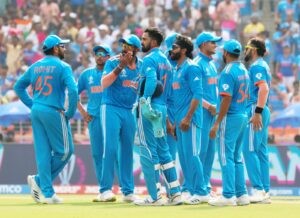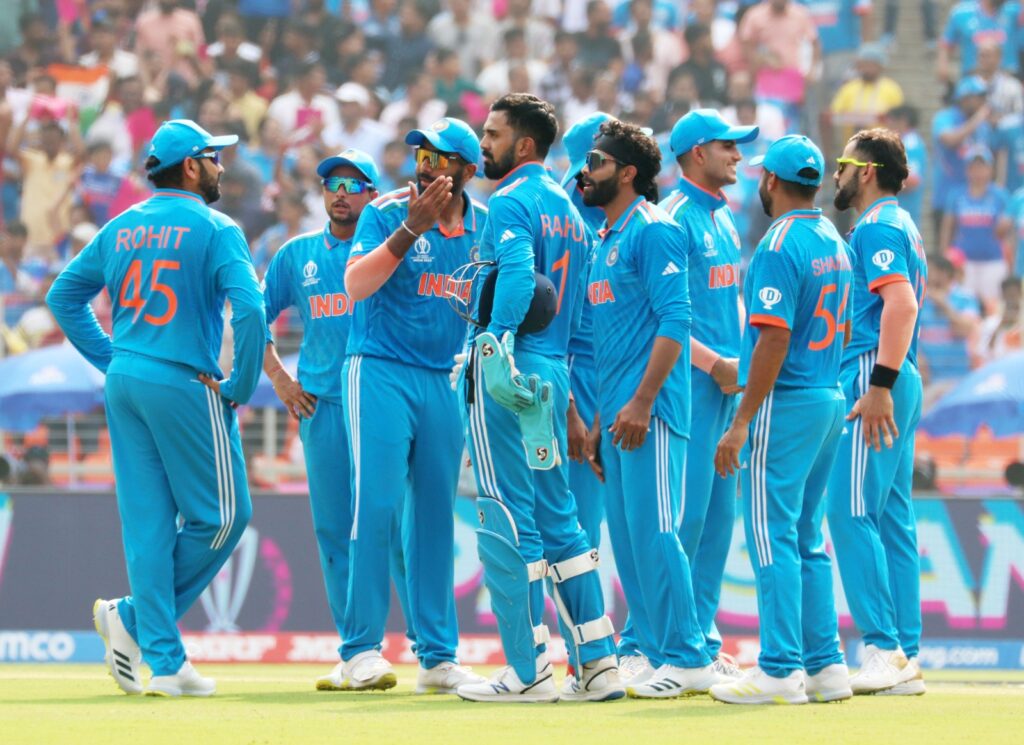
It is always fascinating to hear athletes from another sport talk about cricket. During a recent conversation at his Kolkata home, Sourav Ghosal, the squash ace, offered a very interesting line of thought – one that is popular, but few dare openly express. He said he hoped that if the Indian team had to slip up in a World Cup game, it would happen before the semifinals.
There is good reason for such thinking. Everyone, Ghosal included, who has followed cricket World Cups will recall that India lost to Australia in 2015 and to New Zealand four years later, breaking millions of hearts in the process. And it is no surprise that no one wants the team to pack its bags early a third successive time.
Unlike in a Grand Slam tennis event or a BWF Super Series event, where a defeat spells the end of a player’s journey, the present avatar of the cricket World Cup has each side playing nine matches before the semifinal line-up is decided. The format allows teams a blip or two in the league, with the team finishing fourth in the table having as much chance as the other three to lay hands on the trophy.
Come to think of it, most find the thought of 11 consecutive wins in a World Cup daunting. For, Indian teams have never won 10 matches in a row, let alone in one tournament. The longest streak of successive ODI victories recorded by India is nine, first between November 14, 2008 and February 5, 2009, and then between July 6 and September 24, 2017.
India have won 11 World Cup matches on the trot, once. Under Mahendra Singh Dhoni, they achieved that feat across two editions, winning four successive games, including the semifinal and final, in 2011 and seven, including a quarterfinal against Bangladesh, in 2015 before losing the semifinal to Australia.
India will want to take the momentum all the way through to the final Sunday of the tournament. The team’s collective state of mind and intent have been on display so far in the competition, and it could be counter-productive if they take the foot off the pedal – or are forced to. There is reason to believe that this team will push forward, relentlessly, one game at a time.
India beat New Zealand, the previous table-toppers, to claim pole position after five league games. And in a week’s time, they will take on South Africa in a clash that could decide who tops the log after the group matches. With Australia finding its bearings and looking to take either second or third place, India would aim to seal the No. 1 spot at the end of the league phase, in order to take on the No.4 side in the semifinals.
One the biggest reasons for this unbeaten run has been the success of the top-order batters, especially Virat Kohli and Rohit Sharma. The aggression that Rohit brings to the fore in the first 10 overs allows Shubman Gill and Kohli to bat with less pressure. It has made the top order effective with contributions in nearly every game that match the strength on paper.
With KL Rahul also batting sensibly at No. 5 and Ravindra Jadeja contributing his mite when he got bat for the first time in the World Cup, India only need Shreyas Iyer and Suryakumar Yadav to make their presence felt. Both are capable bats and can be expected to join the others in ensuring that India remains ready to face any challenge.
Of course, there could be a banana peel lying in wait, but this team has looked sharp enough to avoid slipping on any. India have been challenged in each of the five matches, but they have invariably clawed back with a sense of purpose to cross the line each time. And it is not just the batters who have managed that. The bowlers had to dig themselves in to push New Zealand’s chargeback.
And, while one bowler did more than his bit on a flat deck – Mohammed Shami led with a five-wicket haul – the pushback really started with the man who had been taken to the cleaners earlier in the innings. Kuldeep Yadav, the left-arm wrist-spin bowler, did a smart, resolute U-turn by claiming two wickets. It is such resilience that suggests that the players in this team are eager to go the extra mile.
It does not need Shami to explain how players in this team are celebrating one another’s successes. Nor do we need to see a photograph of Rohit, the skipper, holding Kohli and Rahul in an embrace – relief and joy, pride and gratitude reflected in his smile.
In some ways, the week-long break for the Indian team at the midway stage of the league may have come as a chance to recharge the batteries. They have had the opportunity to recalibrate the mission as a tournament of six games, rather than think of the five gone by. If they still think of the World Cup as a 11-match marathon, some amount of weariness may be felt.
Finding ways to be fresh in mind and body at the start of each game, this team have been relentless, aware that the glory of each previous victory had already slipped into the past. They are ready to face any situation and find a way through it calmly, without panic. This is a team that appears to saying: “Next!”
India’s remaining league games
vs England, October 29, Lucknow
vs Sri Lanka, November 2, Mumbai
vs South Africa, November 5, Kolkata
vs Netherlands, November 12, Bengaluru




